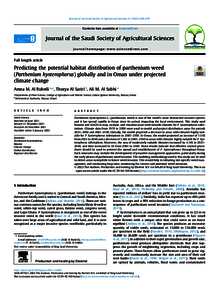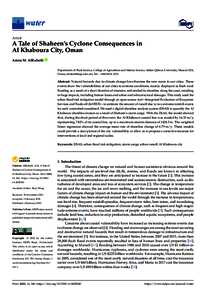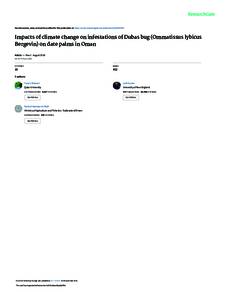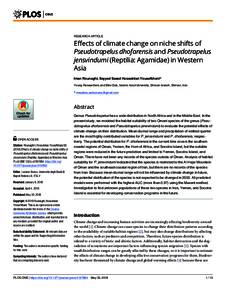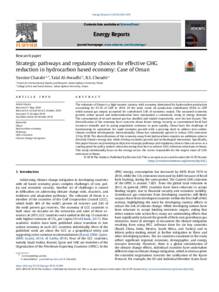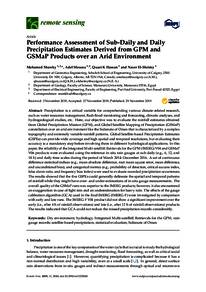وثيقة
Predicting the potential habitat distribution of parthenium weed (parthenium hysterophorus) globally and in Oman under projected climate change.
المعرف
DOI: 10.1016/j.jssas.2021.12.004
المصدر
Journal of the Saudi Society of Agricultural Sciences. v. 21, 7, p. 469-478
المساهمون
Al-Saririyah, Thurya., مؤلف
Al-Subhi, Ali M., مؤلف
الدولة
Saudi Arabia.
مكان النشر
Riyadh.
الناشر
King Saud University.
ميلادي
2022-10-01
اللغة
الأنجليزية
الملخص الإنجليزي
Parthenium hysterophorus L. (parthenium weed) is one of the world's most destructive invasive species, and it has spread rapidly in Oman since its arrival, impacting the local environment. This study used Maxent and ArcGIS to map, analyze, and visualize areas with suitable climates for P. hysterophorus infestations. Climate data from 1970 to 2000 were used to model and project distribution areas for periods 2021–2040 and 2081–2100. Globally, the model projected a decrease in areas with climates highly suitable for P. hysterophorus infestations in 2081–2100. In Oman, the model projected an increase of 1.54% from 2021 to 2040 and a decrease of 1.26% in 2081–2100 in areas with climates highly suitable for P. hysterophorus infestations. Moreover, the area of moderately suitable climates increased by 4.14% in 2021–2040, and then increased to 5% from 2081 to 2100. These results indicate that effective control procedures should be used to prevent the spread and establishment of P. hysterophorus throughout Oman. Such measures may include the development of proactive management approaches, particularly during the early phases of parthenium weed invasion. The modeling methodology used in this study can be used to detect areas susceptible to future weed invasion. This would help in initiating site-specific weed management, and conducting long-term monitoring for current and potential weed invasions.
ISSN
1658-077X
قالب العنصر
مقالات الدوريات

